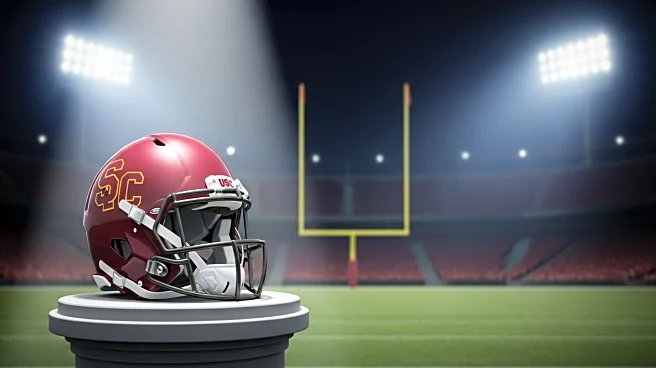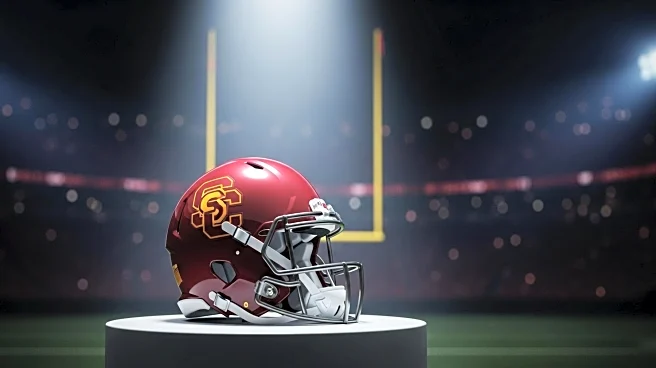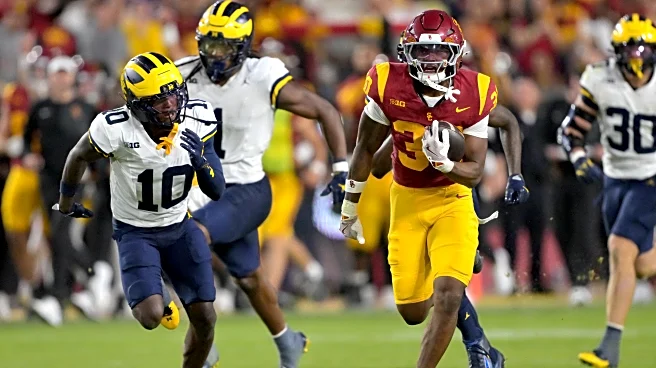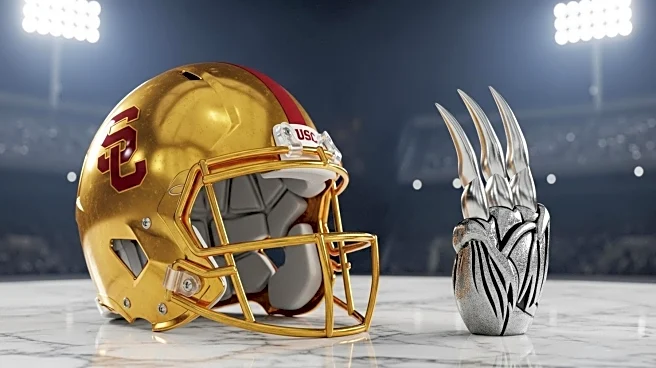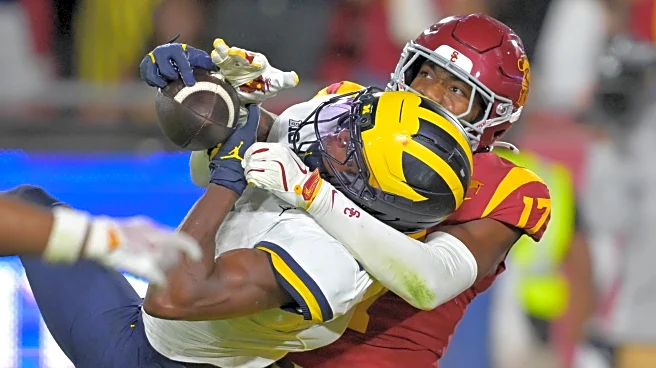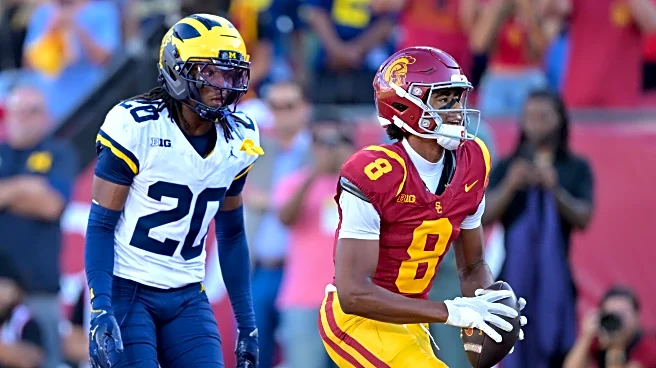What's Happening?
King Miller, a walk-on running back for the University of Southern California (USC), delivered a remarkable performance in the game against Michigan on October 11, 2025. Miller rushed for 158 yards and scored a touchdown, contributing significantly to USC's 31-13 victory over Michigan. His standout plays included a 49-yard run and a 47-yard run, marking him as the first walk-on to score a touchdown for USC since 1994. Miller's opportunity arose when Waymond Jordan, USC's leading rusher, was injured during the game, allowing Miller to step up and make a significant impact.
Why It's Important?
Miller's performance is significant as it highlights the potential for walk-on players to make substantial contributions to their teams, challenging the traditional reliance on scholarship athletes. His success underscores the depth and resilience of USC's football program, which managed to secure a victory despite injuries to key players. This win also positions USC favorably in the College Football Playoff conversation, enhancing their prospects for the season. The victory over a ranked team like Michigan boosts USC's reputation and morale, potentially influencing recruitment and team dynamics.
What's Next?
Following this victory, USC is poised to continue its campaign with renewed confidence. The team will face South Bend next Saturday, where another win could further solidify their standing in the College Football Playoff discussions. The status of injured players like Waymond Jordan remains uncertain, which may lead to more opportunities for Miller and other players to step up. USC's coaching staff will likely focus on maintaining the momentum and addressing any strategic adjustments needed to capitalize on their recent success.
Beyond the Headlines
Miller's journey from a walk-on to a key player in a major victory highlights broader themes of perseverance and opportunity in college sports. His success story may inspire other non-scholarship athletes to pursue their dreams despite the odds. Additionally, this development could prompt discussions about the support and recognition of walk-on players within collegiate athletic programs, potentially influencing policies and practices related to athlete development and team composition.





